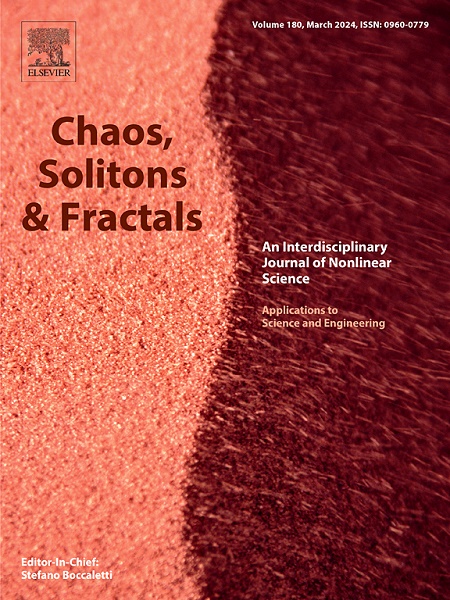Graph convolutional network for structural equivalent key nodes identification in complex networks
IF 5.3
1区 数学
Q1 MATHEMATICS, INTERDISCIPLINARY APPLICATIONS
引用次数: 0
Abstract
Identifying key influential nodes in complex networks is crucial for applications such as social network analysis, epidemiology, and recommendation systems. This paper proposes SE_GCN (Structural Equivalence with Graph Convolutional Network), a method that combines structural equivalence with Graph Convolutional Networks (GCNs) to identify key nodes in complex networks. SE_GCN leverages structural similarities among nodes at various hop distances to construct a comprehensive feature matrix, which is directly used for node embedding. GCNs are employed to process this feature matrix, learning effective representations of nodes within the network. The fully connected layer of SE_GCN computes the embedded score of each node, and a sigmoid function predicts the influential probabilities of nodes. The performance of SE_GCN is evaluated by comparing it with the Susceptible-Infected-Recovered (SIR) epidemiological model, Kendall's tau correlation, and Jaccard similarity. The proposed method is assessed using baseline methods in terms of infection rate, seed set size, correlation coefficient, and similarity index across several synthetic and real-world networks. The results demonstrate that SE_GCN outperforms existing methods, highlighting its effectiveness and robustness in identifying influential nodes.
复杂网络结构等效关键节点识别的图卷积网络
识别复杂网络中的关键影响节点对于社会网络分析、流行病学和推荐系统等应用至关重要。本文提出了SE_GCN (Structural Equivalence with Graph Convolutional Network,结构等价与图卷积网络),一种将结构等价与图卷积网络(Graph Convolutional Networks, GCNs)相结合的复杂网络关键节点识别方法。SE_GCN利用不同跳距节点之间的结构相似性构建综合特征矩阵,直接用于节点嵌入。GCNs被用来处理这个特征矩阵,学习网络中节点的有效表示。SE_GCN的全连接层计算每个节点的嵌入分数,并使用sigmoid函数预测节点的影响概率。通过将SE_GCN与易感-感染-恢复(SIR)流行病学模型、Kendall's tau相关性和Jaccard相似性进行比较,评估SE_GCN的性能。采用基线方法对几种合成网络和现实世界网络的感染率、种子集大小、相关系数和相似指数进行了评估。结果表明,SE_GCN优于现有方法,突出了其在识别影响节点方面的有效性和鲁棒性。
本文章由计算机程序翻译,如有差异,请以英文原文为准。
求助全文
约1分钟内获得全文
求助全文
来源期刊

Chaos Solitons & Fractals
物理-数学跨学科应用
CiteScore
13.20
自引率
10.30%
发文量
1087
审稿时长
9 months
期刊介绍:
Chaos, Solitons & Fractals strives to establish itself as a premier journal in the interdisciplinary realm of Nonlinear Science, Non-equilibrium, and Complex Phenomena. It welcomes submissions covering a broad spectrum of topics within this field, including dynamics, non-equilibrium processes in physics, chemistry, and geophysics, complex matter and networks, mathematical models, computational biology, applications to quantum and mesoscopic phenomena, fluctuations and random processes, self-organization, and social phenomena.
 求助内容:
求助内容: 应助结果提醒方式:
应助结果提醒方式:


